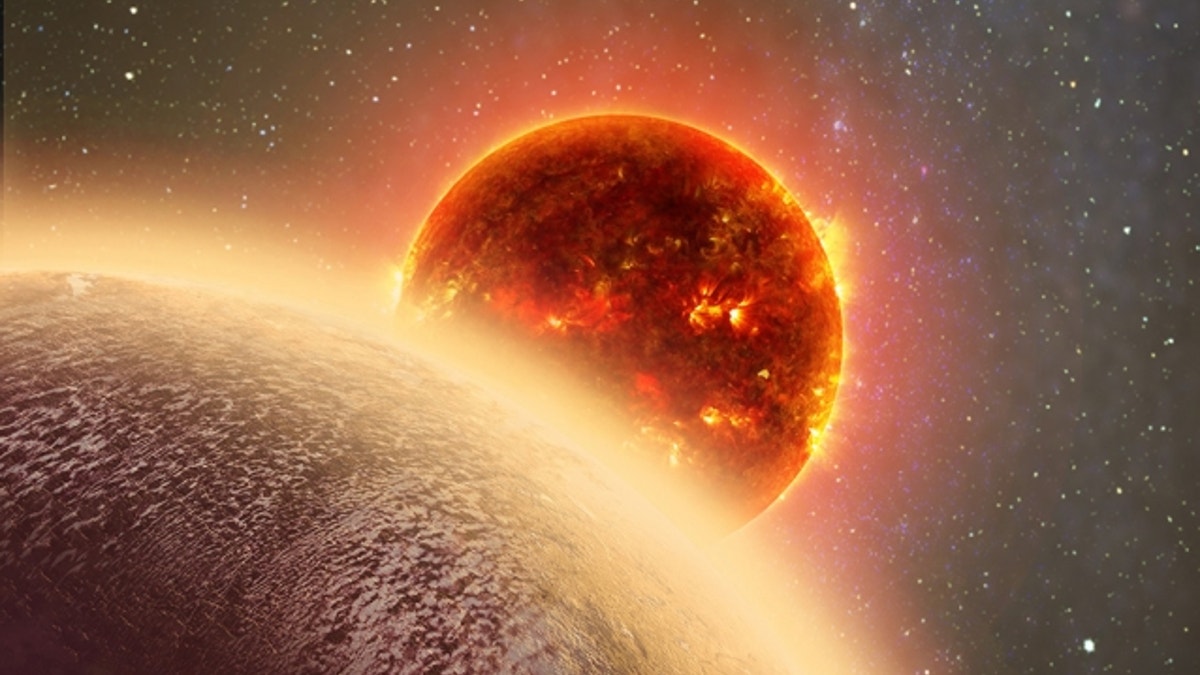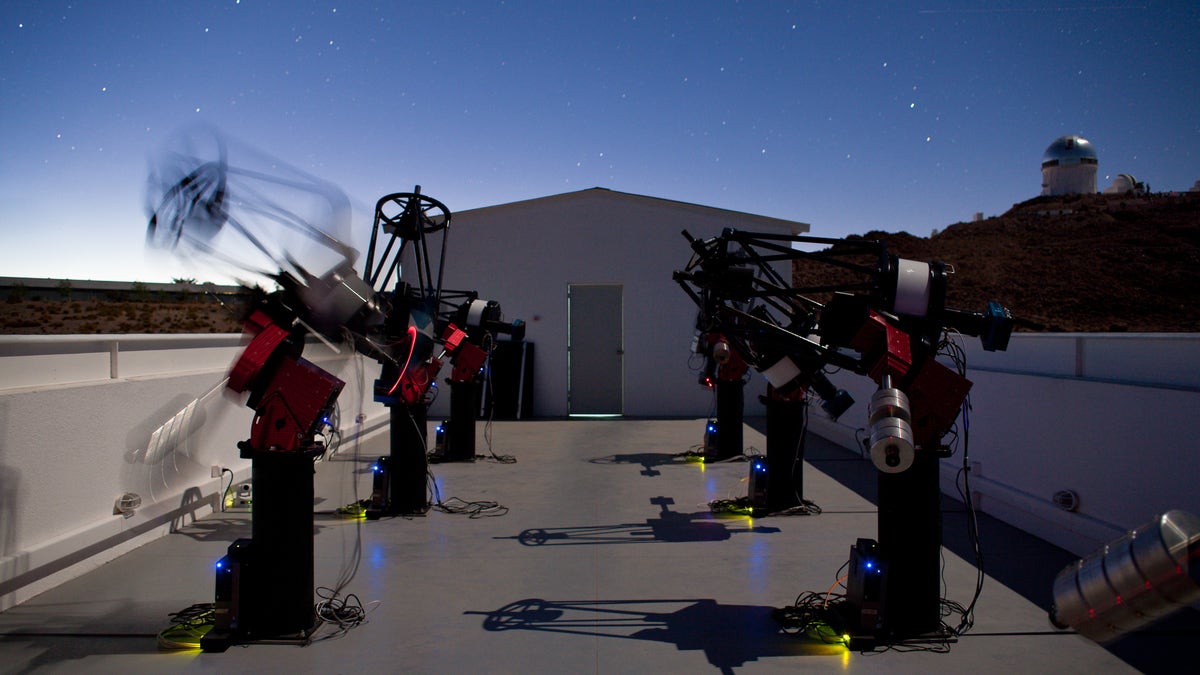
In this artist's rendering of GJ 1132b, a rocky exoplanet very similar to Earth in size and mass, circles a red dwarf star. GJ 1132b is relatively cool (about 450 degrees F) and could potentially host an atmosphere. At a distance of only 39 light-years, it will be a prime target for additional study with Hubble and future observatories like the Giant Magellan Telescope. (Dana Berry)
In the search for an Earth-like exoplanet, scientists appear to have stumbled on one that looks more like Venus.
The planet, named GJ 1132b, is orbiting a small star located a mere 39 light-years from Earth, making it the closest Earth-sized exoplanet yet discovered. It’s believed to be about 440 degrees Fahrenheit on its rocky surface, and is likely tidally locked, meaning that it has a permanent day and night side, presenting the same face to its star.
Related: Ancient exoplanets raise prospects of intelligent alien life
Because of its scorching temperatures, GJ 1132b probably can’t retain liquid water on its surface, making it uninhabitable for life as we know it. However, scientists say it is cool enough to host a substantial atmosphere.
“If we find this pretty hot planet has managed to hang onto its atmosphere over the billions of years it’s been around, that bodes well for the long-term goal of studying cooler planets that could have life,” said Zachory Berta-Thompson, a postdoc in MIT’s Kavli Institute for Astrophysics and Space Research, in a statement. Berta-Thompson was part of a study on the discovery that appeared in the journal Nature.

The MEarth-South telescope array, located on Cerro Tololo in Chile, searches for planets by monitoring the brightness of nearby, small stars. This long-exposure photograph shows MEarth-South telescopes observing at night; the blurred telescope is slewing from one star to another. (Jonathan Irwin)
And it is similar in size to Earth. Researchers found that GJ 1132b is 16 percent larger than Earth, with a diameter of about 9,200 miles. It has a mass 60 percent greater than Earth.
Related: NASA spots more planets out of solar system that may be like Earth
What is intriguing scientists most is its proximity to Earth, which means it could be far easier to learn more about its characteristics, from the composition of its atmosphere to the pattern of its winds and the color of its sunsets.
“We finally have a target to point our telescopes at, and [can] dig much deeper into the workings of a rocky exoplanet, and what makes it tick,” said Berta-Thompson. “This planet is going to be a favorite target of astronomers for years to come.”
The centuries-old search for a planet like ours has intensified of late, thanks to more powerful telescopes and efforts like NASA’s Kepler mission. More than 1,900 planets have been discovered so far- including a collection of eight earlier this year. But many are much further away or little more than rocky fireballs, with surface temperatures in the thousands of degrees - far too hot to hold onto any kind of atmosphere.
Berta-Thompson and an international team that included scientists from Brazil, France and Portugal discovered the planet using the MEarth-South Observatory, a Harvard University-led array of eight 40-centimeter-wide robotic telescopes located in the mountains of Chile. The array monitors small, nearby stars called M dwarfs, which are scattered all over the night sky and often are orbited by planets.
Related: Rare doomed planet with extreme seasons discovered
On May 10, one telescope picked up a faint dip from GJ 1132. “Our galaxy spans about 100,000 light-years,” Berta-Thompson says. “So this is definitely a very nearby solar neighborhood star.”
The robotic telescope immediately started observing GJ 1132 at much faster 45-second intervals to confirm the measurement - a very slight dip of about 0.3 percent of the starlight. To confirm their finding, the researchers pointed other telescopes in Chile at the star, and found that GJ 1132’s brightness dimmed by 0.3 percent every 1.6 days - a signal that a planet was regularly passing in front of the star.
“We didn’t know the planet’s period from one single event, but when we phased many of them together, this signal popped out,” Berta-Thompson said, adding that researchers will now start looking for sister planets of GJ 1132.
Berta-Thompson hopes that astronomers will use the James Webb Space Telescope, the much larger successor to the Hubble Space Telescope that is launching in 2018, to identify the color and the chemical makeup of the planet’s atmosphere, along with the pattern of its winds.
“We think it’s the first opportunity we have to point our telescopes at a rocky exoplanet and get that kind of detail, to be able to measure the color of its sunset, or the speed of its winds, and really learn how rocky planets work out there in the universe,” Berta-Thompson said. “Those will be exciting observations to make.”
